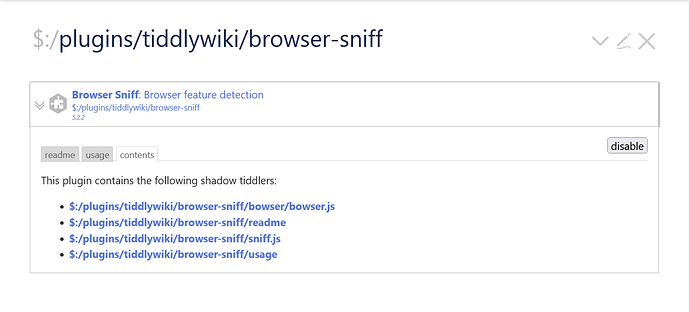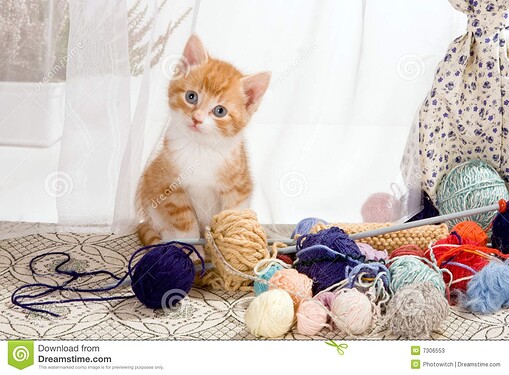Short version
In TiddlyWiki A tiddler is a tiddler is a tiddler… That means everything is a tiddler.
Longer version
The TiddlyWiki “core software” is a tiddler. More precisely it’s a plugin.
Plugins are “packages” of tiddlers, which can be managed by users.
eg: The Browser Sniff plugin contains 4 tiddlers.
See contents of the Brwoser Sniff plugin
At startup – plugins are expanded to Shadow Tiddlers and executed, if they contain software.
They also can contain documentation like readme’s
Shadow tiddlers can be modified by users. If modified they become System Tiddlers which allows users to “own and modify their software”. … If such a modified system tiddler is deleted, the “shadow tiddler” will take over again. … IMO this feature is absolutely unique to TW
User content is a tiddler. — User content can be tagged. — Tags can be tiddlers — Tags can be tagged to create structure — Tags can contain content like a TableOfContents — Content can be linked — Links automatically “create” backlinks — Backlinks can be used by filters — Filters create lists of tiddlers — Filters can be used by macros like the toc-macros — Macros are defined in Tiddlers — Macros are tagged $:/tags/Macro — $:/tags/Macro is a system-tag — There are more system tags like $:/tags/PageTemplate — Templates are Shadow Tiddlers — Tiddlers tagged $:/tags/PageTemplate are used by the “core software” to build the TiddlyWiki UI (user interface) — “the core” is a plugin - you know  — Templates are part of the core — At startup the core is expanded into Shadow Tiddlers — Shadow Tiddlers can be manipulated by the user — So advanced users can “own the TiddlyWiki UI” … – to come to an end –
— Templates are part of the core — At startup the core is expanded into Shadow Tiddlers — Shadow Tiddlers can be manipulated by the user — So advanced users can “own the TiddlyWiki UI” … – to come to an end –
User content is a tiddler …
Recursion short — A tiddler is a tiddler is a tiddler …
have fun!
 … rather just point out that the main “unit” in TiddlyWiki IS the “Tiddler” … it is a radical approach to data design that let’s you do most anything. Other systems talk about “units” but, in reality, they compromise them quickly.
… rather just point out that the main “unit” in TiddlyWiki IS the “Tiddler” … it is a radical approach to data design that let’s you do most anything. Other systems talk about “units” but, in reality, they compromise them quickly.
 — Templates are part of the core — At startup the core is expanded into Shadow Tiddlers — Shadow Tiddlers can be manipulated by the user — So advanced users can “own the TiddlyWiki UI” … – to come to an end –
— Templates are part of the core — At startup the core is expanded into Shadow Tiddlers — Shadow Tiddlers can be manipulated by the user — So advanced users can “own the TiddlyWiki UI” … – to come to an end –
